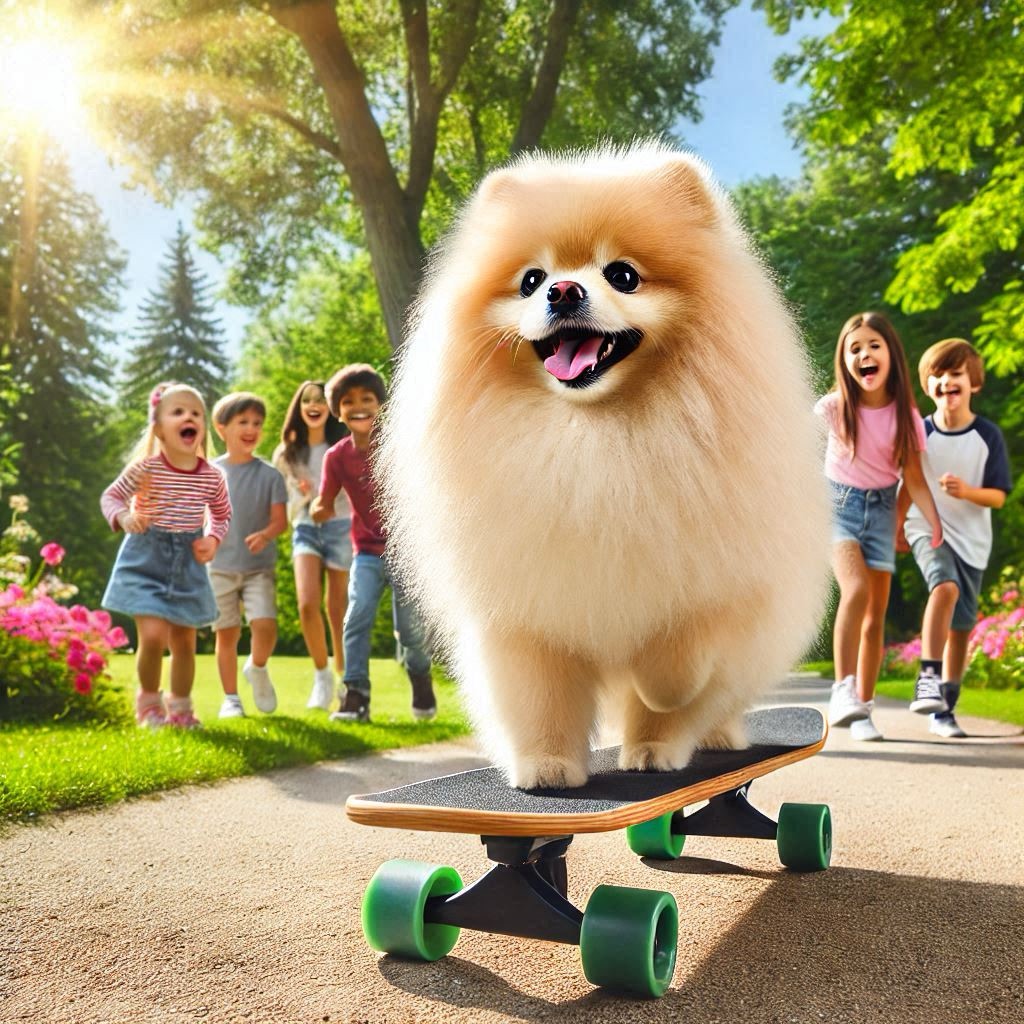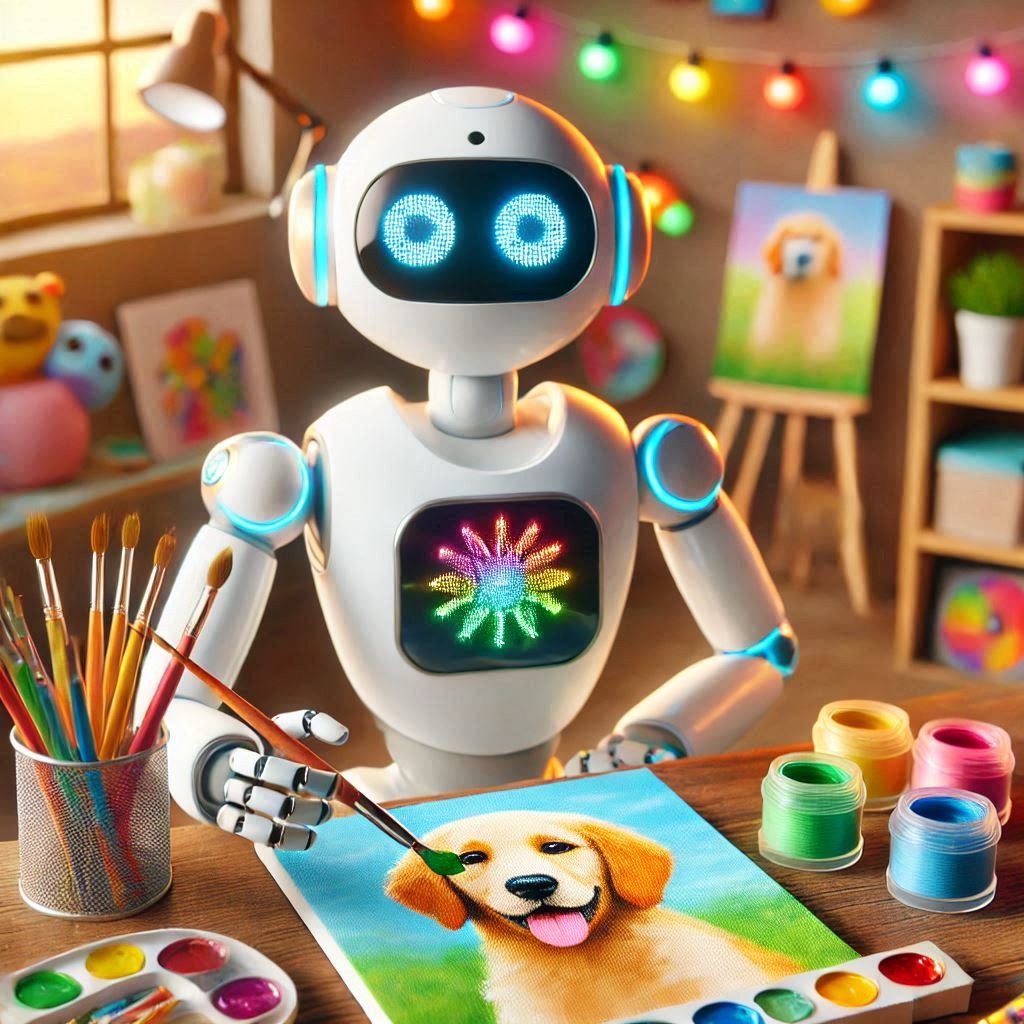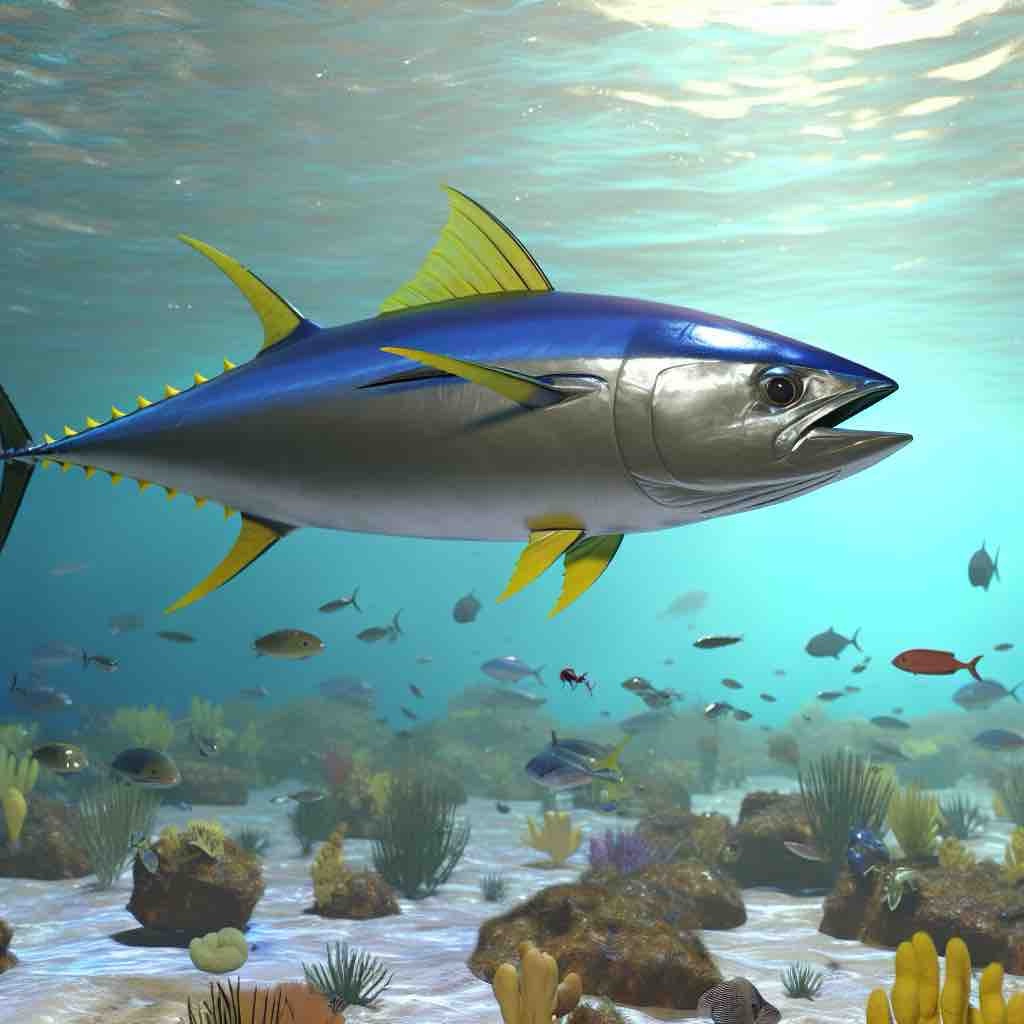One of the most popular things Artificial Intelligence (AI) is used for is image generation. For example, I just thought of a pomeranian dog riding a skateboard. I asked Copilot to create it and here it is.

Artificial intelligence image generation tools have revolutionized digital art and design. These powerful platforms allow users to create stunning visuals simply by inputting text descriptions.

Each tool offers unique capabilities and strengths.
Popular AI image generators like DALL-E, Midjourney, and Stable Diffusion produce remarkably different results despite using similar underlying technologies. Factors such as training datasets, model architectures, and fine-tuning processes contribute to their distinct visual styles and specialties.
Comparing these tools reveals fascinating insights into the current state of AI art. Evaluating aspects like image quality, prompt interpretation, and creative flexibility can help users choose the right generator for their specific needs and artistic vision.
Overview of AI Image Generation
AI image generation has revolutionized digital art creation, allowing users to produce stunning visuals with simple text prompts. This technology combines machine learning algorithms with vast datasets to generate unique images.
The Rise of AI in Image Creation
AI image generation emerged in the late 2010s, gaining widespread attention in 2022. Early models like DeepArt and Artbreeder paved the way for more advanced systems.
DALL-E, Midjourney, and Stable Diffusion became household names, attracting millions of users. These tools democratized art creation, enabling anyone to produce high-quality images without traditional artistic skills.
The technology found applications in various fields, including:
- Graphic design
- Advertising
- Film and video game production
- Fashion design
Understanding Image Generation Technology
AI image generators use deep learning models trained on massive datasets of images and text. The most common approach is diffusion models, which gradually refine random noise into coherent images.
Key components of AI image generation include:
- Text-to-image conversion
- Style transfer
- Image editing and manipulation
These systems interpret text prompts, analyzing keywords and context to generate relevant images. They can also combine multiple concepts, creating unique and sometimes surreal visuals.
Advanced features like inpainting and outpainting allow users to edit existing images or expand their boundaries. This versatility has made AI image generators valuable tools for professionals and hobbyists alike.
Leading AI Image Generation Tools
AI image generation has rapidly evolved, with several powerful tools emerging as frontrunners in the field. These tools offer diverse capabilities, unique approaches, and varying levels of accessibility for users.
DALL-E and Variants
DALL-E, developed by OpenAI, has become a prominent name in AI art creation. The original DALL-E showcased the ability to generate images from text descriptions. DALL-E 2 improved on this with higher resolution outputs and more accurate text interpretation.
DALL-E 3 further refined image quality and text understanding. It produces more detailed and coherent images, often capturing nuanced elements from complex prompts. The tool excels in creating realistic scenes and abstract concepts alike.
OpenAI has made DALL-E accessible through various platforms, including direct API access for developers. This has led to its integration in numerous applications and services.
Stable Diffusion
Stable Diffusion, an open-source AI model, has gained significant traction in the AI art community. It offers high-quality image generation with relatively low computational requirements.
The tool supports various functionalities, including text-to-image, image-to-image, and inpainting. Stable Diffusion XL, an advanced version, produces higher resolution images with improved detail and coherence.
Stable Diffusion’s open nature has led to a vibrant ecosystem of implementations and fine-tuned models. This has resulted in specialized versions for tasks like anime art creation or photo-realistic portraits.
MidJourney and Its Approach
MidJourney takes a unique approach to AI image generation. It operates primarily through a Discord bot interface, making it highly accessible to non-technical users.
The tool is known for its distinctive artistic style, often producing images with a painterly or illustrative quality. MidJourney excels in creating fantastical and surreal imagery.
It offers a collaborative environment where users can view and interact with others’ creations. This fosters a community-driven approach to AI art generation.
Adobe Firefly
Adobe Firefly represents Adobe’s entry into the AI image generation space. It integrates seamlessly with Adobe’s existing suite of creative tools.
Firefly focuses on generating images that blend well with traditional design workflows. It offers features like text-to-image generation, style transfer, and image editing.
The tool emphasizes ethical AI use, training on Adobe Stock images and openly licensed content. This approach aims to address concerns about copyright and attribution in AI-generated art.
Emerging Technologies in AI Art
New AI art tools continue to emerge, pushing the boundaries of what’s possible. Leonardo AI focuses on game asset creation, offering specialized features for game developers.
Imagen 3, developed by Google, demonstrates advanced capabilities in photorealistic image generation. It excels in creating images with complex lighting and textures.
Craiyon, formerly DALL-E mini, provides a free and accessible option for AI image generation. While less advanced than some competitors, it offers a low-barrier entry point for users new to AI art.
Capabilities and Output Quality

AI image generation tools offer diverse capabilities for creating visual content. These systems excel at producing high-quality images across various styles and concepts.
Generating High-Quality Visuals
Leading AI image generators can create photorealistic images with impressive detail and clarity. These tools produce lifelike portraits, landscapes, and objects that closely mimic real-world photographs. The quality often matches or surpasses stock imagery, making them suitable for professional use.
Advanced algorithms enable the creation of intricate textures, accurate lighting, and complex scenes. Users can generate images with specific attributes like time of day, weather conditions, or camera angles.
Some platforms specialize in particular visual styles, such as anime or digital art. These tools cater to niche markets and artistic preferences.
Text-to-Image Conversion
Text-to-image capabilities allow users to describe desired visuals in natural language. AI models interpret these prompts and generate corresponding images.
This feature enables rapid visualization of ideas without requiring artistic skills. Users can refine results by adjusting text descriptions or using additional parameters.
The accuracy of text-to-image conversion varies between platforms. Some excel at literal interpretations, while others capture more abstract or conceptual elements of the text input.
Customization and Style Transfer
AI image generators offer extensive customization options. Users can modify generated images by adjusting specific elements or applying filters.
Style transfer capabilities allow the application of artistic styles to existing images or AI-generated content. This feature can transform photos into paintings or replicate the style of famous artists.
Some tools provide fine-grained control over artistic elements like brush strokes, color palettes, and composition. These features cater to both casual users and professional artists seeking to enhance their workflow.
Handling Abstract Concepts
AI image generators can visualize abstract ideas and surreal concepts. These tools excel at creating unique, imaginative visuals that may be difficult to produce through traditional means.
Users can generate images of fantastical creatures, impossible landscapes, or visual representations of emotions and abstract thoughts. This capability is particularly useful for creative projects, marketing campaigns, and conceptual art.
The interpretation of abstract prompts varies between platforms. Some generate more literal representations, while others produce more nuanced or unexpected results.
User Experience and Accessibility

AI image generation tools offer varying levels of user-friendliness and accessibility. These platforms cater to different skill levels and provide options for both free and paid usage.
Ease of Use and User Interface Design
Many AI image generators prioritize user-friendly interfaces. Tools like DALL-E 2 and Midjourney feature clean, intuitive designs that allow users to quickly generate images. Text-to-image prompts are straightforward, with clear input fields and easy-to-navigate menus.
Some platforms offer additional features like image editing tools and preset styles. These enhance the user experience by providing more control over the final output. Advanced options are often tucked away in expandable menus, maintaining a clutter-free interface for beginners.
Mobile apps for AI image generation are becoming more common. These apps optimize the interface for smaller screens, making image creation possible on-the-go.
AI Tools for Different Skill Levels
AI image generators cater to various skill levels. Novice users can rely on simple text prompts to create images quickly. More experienced users can fine-tune their results with advanced settings and detailed prompts.
Some tools offer tutorials and prompt suggestions. These features help beginners understand how to craft effective prompts. For designers and artists, certain platforms provide more precise control over image attributes like composition and style.
Content creators and marketers benefit from tools that integrate with other software. This allows for seamless workflows when creating visual content for campaigns or social media.
Availability of Free AI Image Generators
Several free AI image generators are available, making the technology accessible to a wider audience. These tools often have limitations compared to paid versions but still offer impressive capabilities.
Free tiers typically restrict the number of images users can generate daily. They may also limit image resolution or exclude certain advanced features. Despite these constraints, free tools are valuable for experimentation and basic projects.
Some platforms use a credit system. Users receive a set number of free credits periodically, which they can use to generate images. This model allows occasional use without cost while encouraging upgrades for frequent users.
Application in Industries
AI image generation tools are transforming various sectors, enabling new creative possibilities and streamlined workflows. These technologies offer innovative solutions for visual content creation across different fields.
AI in Marketing and Branding
AI-powered image generation tools are revolutionizing marketing and branding strategies. These technologies allow marketers to create custom visuals quickly and cost-effectively. Brands can produce tailored images for campaigns, product mock-ups, and advertisements without extensive photo shoots.
AI tools enable rapid iteration of design concepts, helping teams explore multiple visual directions efficiently. This agility is particularly valuable for A/B testing in digital marketing campaigns.
Many platforms offer brand-specific customization options. Companies can train AI models on their visual identity, ensuring generated images align with brand guidelines. This feature maintains consistency across marketing materials while saving time and resources.
Digital Art and Graphic Design
AI image generation is reshaping the landscape of digital art and graphic design. Artists and designers are incorporating these tools into their creative processes, expanding their capabilities and pushing artistic boundaries.
These technologies serve as powerful ideation tools, generating inspiration and starting points for creative projects. Designers can quickly visualize concepts and explore diverse artistic styles with minimal effort.
AI assists in tasks like background removal, image upscaling, and style transfer. This automation streamlines workflows, allowing designers to focus on higher-level creative decisions.
Some artists are embracing AI as a collaborative partner, blending machine-generated elements with traditional techniques to create unique hybrid artworks.
Social Media Content Creation
AI image generation tools are proving invaluable for social media content creation. These technologies help businesses and influencers maintain a consistent stream of visually engaging posts.
Content creators can rapidly produce eye-catching graphics, memes, and illustrations tailored to specific platforms and audiences. This speed and versatility are crucial in the fast-paced world of social media.
AI tools offer templates and customization options for various post types, such as quotes, product showcases, and event promotions. This feature enables users to maintain visual consistency across their social media presence.
Some platforms integrate with social media scheduling tools, streamlining the content creation and publishing process. This integration helps maintain a regular posting cadence with less manual effort.
Technological Foundations and Models

AI image generation tools rely on sophisticated machine learning architectures to produce visual content. These models process vast amounts of data to learn patterns and generate new images.
Neural Networks and Their Roles
Neural networks form the backbone of AI image generation. These interconnected layers of artificial neurons process input data, extracting features and patterns. Convolutional neural networks (CNNs) excel at image analysis, identifying shapes, textures, and objects.
Recurrent neural networks (RNNs) handle sequential data, useful for generating coherent image sequences. Transformer architectures, like those used in DALL-E and Midjourney, excel at understanding context and relationships between elements.
Neural networks in image models learn to recognize and reproduce complex visual concepts. This enables them to generate diverse and creative outputs based on text prompts or other inputs.
Understanding Generative Adversarial Networks
Generative Adversarial Networks (GANs) consist of two competing neural networks: a generator and a discriminator. The generator creates images, while the discriminator evaluates them.
This adversarial process improves image quality over time. The generator learns to produce more realistic images to fool the discriminator. Meanwhile, the discriminator becomes better at detecting fake images.
GANs have been instrumental in creating high-quality, photorealistic images. They excel at tasks like style transfer, image-to-image translation, and generating faces of non-existent people.
The Significance of Diffusion Models
Diffusion models have gained prominence in AI image generation. These models work by gradually adding noise to an image and then learning to reverse this process.
The step-by-step denoising process allows for fine-grained control over image generation. This results in high-quality outputs with impressive detail and coherence.
Tools like Stable Diffusion use these models to create images from text descriptions. Diffusion models offer advantages in terms of image quality and the ability to generate diverse outputs.
Ideogram and other recent tools leverage diffusion models to produce increasingly realistic and customizable images. The flexibility of diffusion models allows for innovations in areas like inpainting and image editing.
Commercial and Ethical Considerations

AI image generation tools raise important questions around licensing, commercial use, and ethical application. These issues impact both creators and businesses leveraging the technology.
Licensing and Commercial Use
Most AI image generators offer free tiers with basic features. Paid plans unlock advanced capabilities like higher resolutions and faster processing. Midjourney provides commercial usage rights for subscribers. DALL-E allows commercial use of generated images, with some restrictions.
Stable Diffusion’s open-source model enables customization. This flexibility appeals to businesses seeking tailored solutions. However, open-source licenses may have complex terms.
Licensing terms vary between platforms. Users should carefully review policies before commercial application. Some services retain partial rights to generated images.
Ethical Use of AI Image Generators
AI-generated images can spread misinformation if misused. Clear labeling of AI content is crucial for transparency. Many platforms prohibit creating explicit or violent imagery.
Bias in training data can lead to skewed outputs. This raises concerns about representation and fairness. Developers are working to improve dataset diversity and reduce biases.
Copyright infringement is a key ethical issue. AI models trained on copyrighted works may produce derivative images. This creates legal and moral questions about ownership and attribution.
Text prompts greatly influence image outputs. Users should craft descriptions thoughtfully to avoid unintended results. Responsible use requires understanding the technology’s limitations and potential impacts.
The Future of AI Image Generation

AI image generation is advancing rapidly, with new capabilities and applications emerging. Creative possibilities are expanding as the technology becomes more sophisticated and accessible.
Developments on the Horizon
Next-generation AI image tools will likely offer enhanced photorealism and artistic control. Improved text-to-image models may generate images with greater accuracy and nuance based on natural language descriptions.
Some AI tools may incorporate 3D generation, allowing users to create immersive virtual environments and objects. Animation capabilities could also advance, enabling the creation of lifelike moving images from text prompts.
Specialized AI image generators for specific industries like fashion, architecture, and product design may emerge. These tools could streamline workflows and spark new creative directions for professionals.
Challenges and Opportunities Ahead
As AI image generation advances, ethical concerns around copyright and authenticity will need to be addressed. Clear guidelines and safeguards may be necessary to protect artists’ rights and prevent misuse.
Integrating AI tools into existing creative workflows presents both challenges and opportunities. Artists and designers will need to adapt their skills to work effectively alongside AI assistants.
Accessibility of AI image tools is likely to increase, potentially democratizing aspects of visual creation. This could empower more people to express themselves visually and spark new forms of digital art and design.
Businesses may find new applications for AI-generated images in marketing, product development, and customer experiences. The technology could enable rapid prototyping and personalization at scale.
